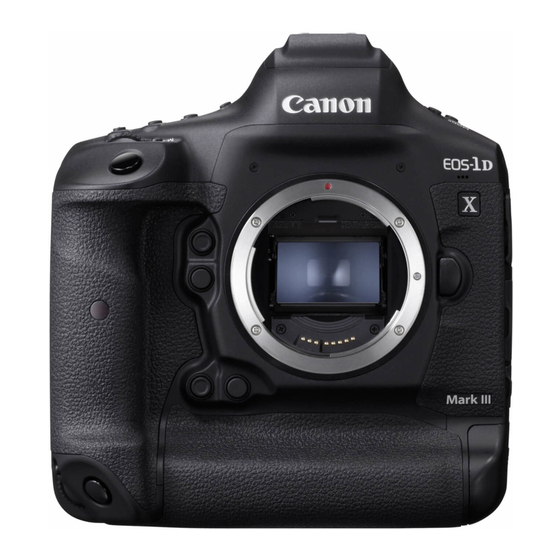Canon EOS-1D Conseils et techniques - Page 7
Parcourez en ligne ou téléchargez le pdf Conseils et techniques pour {nom_de_la_catégorie} Canon EOS-1D. Canon EOS-1D 35 pages. For macintosh
Également pour Canon EOS-1D : Manuel d'instruction (28 pages), Manuel d'instruction (41 pages), Manuel du logiciel (2 pages), Af Point Management (2 pages), Manuel de l'utilisateur du logiciel (50 pages), Catalogue des pièces (38 pages)

The Evolution of AF Speed
& Predictive AF Control
The EOS-1D and EOS-1Ds had the fastest AF systems available among EOS SLRs when
they were introduced, but the EOS-1D Mark II now has the most powerful AF system of
any EOS camera released to date (2004). The EOS-1D Mark II was the first Canon camera
to feature two dedicated CPUs for AF: one for detection and calculation, and another to
control lens drive. EOS-1 class cameras prior to the 1D Mark II used a single dedicated
CPU for all AF operations.
All EOS-1 class digital SLRs feature RISC (Reduced Instruction Set Computing)
processors so that multiple operations can be performed simultaneously. The extra
speed created through this method has made it possible to increase the power and
sophistication of the algorithms employed for predictive AF. Using an EF 300mm f/2.8L
IS USM lens and a fully charged battery pack, the original EOS-1 with Power Drive
Booster PB-E1 could track a subject moving at 300 kph/186 mph as close as 26
meters/85 ft. Using an EF 300mm f/2.8L IS USM lens and a fully charged battery pack,
an EOS-1D Mark II or EOS-1Ds Mark II can track a subject moving at 300 kph/186 mph
as close as 20 meters/66 ft.
Predictive AI Servo AF Performance
How close can the camera track a moving subject with an EF300mm f/2.8L IS Lens
5km/h
10
30m
20m
10m
6m
3m
2m
1m
3mph
6
Subject Speed
EOS-1: 5 fps
(with Power Drive Booster E1)
I. CAMERA FEATURES AND OPERATION
50
100
200
300
30
62
125
185
EOS-1D Mark II: 8.5 fps
400km/h
98 feet
66 feet
33 feet
20 feet
10 feet
6 feet
250mph
7
